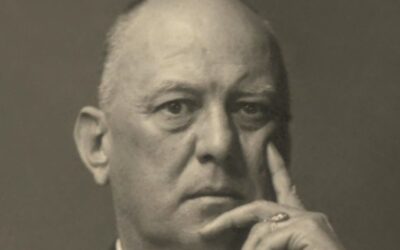John Keats, one of the most celebrated poets of the Romantic era, lived a brief but profoundly impactful life. Born in 1795, Keats produced some of the most exquisite poetry in the English language, leaving behind a legacy that continues to inspire readers and writers alike. His works, characterized by their vivid imagery, emotional depth, and philosophical musings, have earned him a place among the literary immortals.
The Life of John Keats
John Keats was born on October 31, 1795, in London, England. His early life was marked by tragedy; his father died in a riding accident when Keats was just eight years old, and his mother succumbed to tuberculosis a few years later. Despite these hardships, Keats found solace in literature and began his journey as a poet while apprenticed to a surgeon.
By 1817, Keats had abandoned medicine to pursue his true passion: poetry. He immersed himself in the literary circles of London, forming friendships with notable figures like Percy Bysshe Shelley and Leigh Hunt. Despite financial struggles and critical dismissals during his lifetime, Keats remained dedicated to his craft, producing some of the most iconic works in the Romantic canon.
The Poetry of John Keats
Keats’ poetry is renowned for its rich sensory imagery, exploration of beauty, and deep reflections on mortality and the human condition. Among his most famous works are the odes, which capture his artistic genius and philosophical depth.
1. Ode to a Nightingale
This poem reflects on the transient nature of life and the enduring power of art. Inspired by the song of a nightingale, Keats contrasts the bird’s seemingly eternal existence with the fleeting nature of human life.
2. Ode on a Grecian Urn
Here, Keats contemplates the relationship between art and life, exploring the idea that beauty is eternal. The famous line “Beauty is truth, truth beauty” encapsulates his belief in the transcendental power of aesthetic experience.
3. To Autumn
One of Keats’ final poems, To Autumn celebrates the season’s beauty while subtly alluding to the poet’s own impending death. Its serene tone and vivid imagery make it a masterpiece of English literature.
The Romantic Movement and Keats’ Role
As a key figure of the Romantic movement, Keats shared the era’s fascination with nature, emotion, and the sublime. Unlike some of his contemporaries, Keats focused less on political themes and more on the personal and universal aspects of human experience. His work often delves into the tension between the eternal and the ephemeral, the ideal and the real.
Struggles and Triumphs
Keats faced significant challenges throughout his career. Critics in his time often dismissed his work as overly sentimental or immature. Financial difficulties and his own declining health added to his struggles. In 1820, Keats was diagnosed with tuberculosis, the same illness that had claimed his mother and brother.
Despite these hardships, Keats produced an extraordinary body of work in just a few years. His resilience and dedication to poetry exemplify his belief in the redemptive power of art.
Death and Legacy
John Keats died in Rome on February 23, 1821, at the age of 25. His gravestone, inscribed with the words “Here lies One Whose Name was writ in Water,” reflects his fear of being forgotten. Yet, history proved otherwise.
Today, Keats is celebrated as one of the greatest poets in the English language. His works are studied and cherished worldwide, and his influence extends far beyond his brief life. From literary scholars to casual readers, Keats’ poetry continues to touch hearts and minds, proving his immortality in the world of art.
Why John Keats Matters
Keats’ poetry invites readers to explore the profound beauty of life, even in the face of suffering and impermanence. His ability to capture fleeting moments and transform them into timeless art is a testament to his genius. For those seeking solace, inspiration, or a deeper understanding of the human experience, Keats offers an enduring voice of empathy and wisdom.
John Keats may have lived a short life, but his impact is immeasurable. Through his poetry, he achieved a form of immortality, touching generations with his exploration of beauty, truth, and the human spirit. The Tale of John Keats is a reminder that greatness isn’t measured by longevity but by the depth of one’s contributions to the world. His legacy lives on, a testament to the power of words to transcend time and space.
Let’s Talk
John Keats—doesn’t his life feel like a bittersweet reminder of how fleeting time can be and how profound an impact one person can have in such a short span? When I think about him, it’s not just his poetry that amazes me, but his resilience. Imagine knowing you’re battling an illness like tuberculosis, watching loved ones succumb to it, and still pouring your heart into writing. What kind of mindset does it take to create beauty while surrounded by so much loss?
What strikes me most is how Keats saw beauty in everything, even in life’s impermanence. His poetry doesn’t shy away from acknowledging death, yet it celebrates the transient joys of life with an almost defiant passion. Ode to a Nightingale, for example—it’s not just about a bird’s song; it’s about escaping pain through art. Have you ever had a moment where music, art, or even a quiet walk in nature made you forget your troubles? Keats’ work feels like an ode to those moments, reminding us that beauty can coexist with hardship.
And then there’s the irony of his gravestone inscription: “Here lies One Whose Name was writ in Water.” Keats believed his work might be forgotten, yet he’s become immortal through his poetry. Isn’t it fascinating how often we underestimate our own impact? What if he had given up after the harsh critiques he received during his lifetime? How many of us abandon our passions because we fear failure or rejection?
Another thought: Keats’ focus on sensory detail is so vivid it feels like you’re stepping into his world. Whether he’s describing autumn’s bounty or the ethereal beauty of a Grecian urn, he invites us to slow down and notice the little things. In today’s fast-paced world, how often do we take the time to really see, hear, and feel the beauty around us?
What’s even more intriguing is the philosophical layer in his poetry. Take “Beauty is truth, truth beauty.” It’s a simple statement, yet endlessly complex. Do you agree with it? Can beauty really encapsulate truth, or is it a romantic ideal? It’s one of those lines that sparks endless debate, and maybe that’s what makes it so powerful.
So, here’s a question: how do you think Keats’ struggles shaped his art? Would his poetry have been as impactful if he’d lived a longer, easier life? And what lessons can we draw from his ability to turn personal pain into timeless art?
Let’s Learn Vocabulary in Context
Let’s start with “immortal.” This word means lasting forever or never dying. When we say Keats’ legacy is immortal, we mean his poetry will continue to be celebrated for generations. You might use it in everyday life like this: “The hero’s deeds made his name immortal in history.”
Next is “legacy.” A legacy refers to something handed down or left behind for future generations. Keats’ poetry is his legacy to the literary world. In conversation, you could say, “She wants her legacy to be one of kindness and generosity.”
Let’s look at “resilience.” This term describes the ability to recover from difficulties. Keats’ resilience is evident in his dedication to poetry despite illness and criticism. You might hear it used like this: “His resilience helped him rebuild his business after the setback.”
Then there’s “Romantic.” In this context, Romantic refers to the literary and artistic movement that emphasized emotion, nature, and individuality. Keats is one of the most famous Romantic poets. You could say, “The Romantic era gave us some of the most beautiful poetry about nature.”
Consider “sensory.” This word relates to the senses—sight, sound, taste, touch, and smell. Keats’ poetry is rich in sensory detail, making it vivid and immersive. For example: “The restaurant’s design was a sensory experience, with music, lighting, and aromas all perfectly balanced.”
How about “ephemeral”? This means something lasting for a very short time. Keats often wrote about the ephemeral nature of beauty and life. You could use it like this: “The sunset was an ephemeral moment of breathtaking color.”
Let’s talk about “ode.” An ode is a type of lyrical poem that praises something or someone. Keats’ odes are among the most celebrated in English literature. In everyday language, you might hear, “Her speech was like an ode to her mentors.”
Next, we have “aesthetic.” This term refers to the appreciation of beauty or art. Keats’ poetry reflects a deep aesthetic sensibility. For example, “The gallery’s minimalist aesthetic was both calming and inspiring.”
Another key word is “mortality.” Mortality is the state of being subject to death. Keats often explored mortality in his work, reflecting on life’s fragility. In a sentence: “The novel is a meditation on love and mortality.”
Finally, there’s “transcend.” To transcend means to go beyond the limits of something. Keats’ work transcends time, continuing to inspire readers centuries later. You might say, “Her story transcends cultural boundaries, resonating with people everywhere.”
Here’s something to think about: how do words like resilience and transcend apply to challenges you’ve faced? And how can embracing concepts like legacy and mortality help shape the way we live our lives?
Let’s Discuss & Write
Discussion Questions
- How do you think Keats’ experiences with loss and illness influenced his perspective on beauty and mortality?
- What role does sensory detail play in creating emotional connections in poetry or art?
- Do you agree with the statement “Beauty is truth, truth beauty”? Why or why not?
- How might Keats’ legacy have differed if he had received widespread acclaim during his lifetime?
- What can modern creators learn from Keats’ ability to find inspiration in life’s fleeting moments?
Writing Prompt
Imagine you are John Keats, writing a letter to a close friend about the challenges of being a poet in your time. Describe your struggles with health, criticism, and the fear of being forgotten, but also share your hopes for how your poetry might touch future generations. Aim for 250–300 words, blending personal reflection with poetic inspiration.










0 Comments